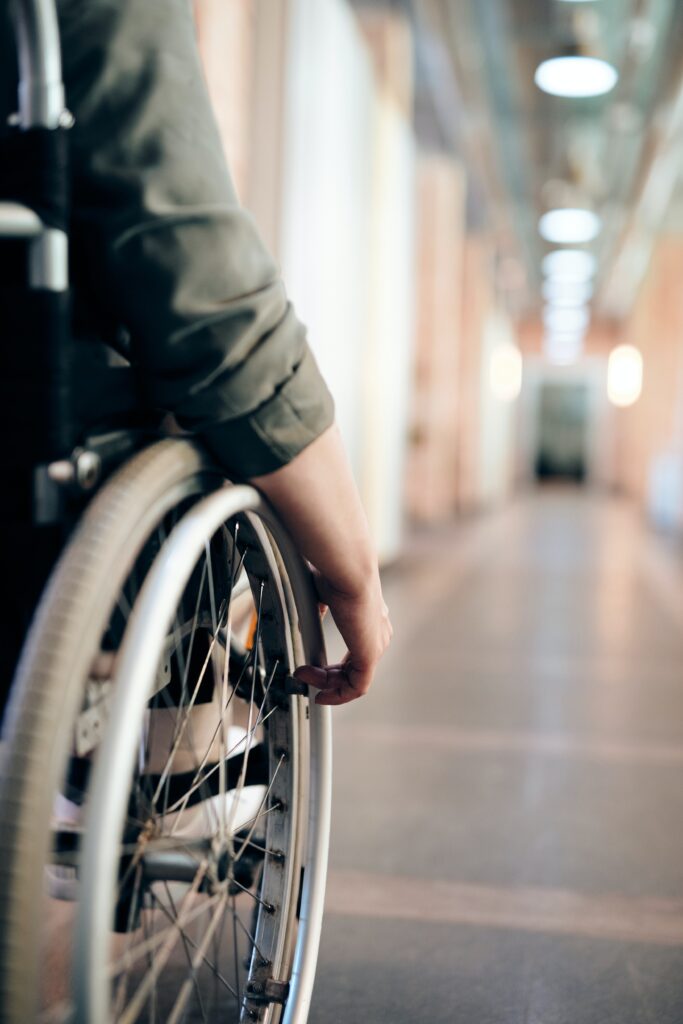Many people take for granted the ability to use the toilet, shower and bathe in the bathtub comfortably and independently. But what if additional assistance is needed to use the bathroom due to a physical impairment or disability?
Mobility aids are designed and manufactured to give more flexibility and independence to people who have problems getting around. In the case of assistive devices for bathrooms, they are of vital importance insofar as they provide autonomy and privacy during use. Indeed, they ensure a level of control and assistance and are essential to ensure that people with disabilities can be independent when using both public and private facilities.
In this article we will review mobility aids that can considerably improve people’s lives when using the bathroom.
What types of mobility aids are there?
Mobility aids 1: Grab bars
Grab bars are accessible handrails that can be used to help someone maintain balance and feel less exhausted while standing. They can be used by the elderly, disabled or those recovering from an illness or injury that affects balance or mobility to ensure their safety in the bathroom.
Grab bars can be installed in the bathroom, near the toilet or sink, and in other rooms and common areas of the house, such as the kitchen and hallway. In this post we will focus specifically on grab bars for the bathroom.
In the bathroom, where slippery surfaces such as the bathtub, shower floor and tiled walls create a dangerous environment that can lead to accidents and where a large number of falls can occur. Strategically placed grab bars, for example, on shower or bathtub walls, help prevent slips and falls. They can help with sitting and standing when placed next to the toilet, and those installed next to the sink or vanity can add more stability.
There are several types of grab bars. Indeed, they are available in a wide range of designs, materials and dimensions. The most typical designs of bathroom grab bars are as follows:
Fixed bars:
Using anchors and mounting screws, these grab bars are firmly anchored to the wall. They are available in different versions, models and shapes to suit all types of spaces. In addition, they can be fixed directly to the wall or to the floor, bathtub, etc.
Folding:
When not in use, these grab bars fold or flip open to save space in tight spaces, such as next to a toilet or sink.
Suction:
This type of bar makes use of suction cups to adhere to the wall. These grab bars work best as a temporary solution, such as when traveling or healing from specific operations or injuries. Suction cup grab bars are typically used to aid balance and are not designed to support full body weight. This is why it is vitally important to regularly check the suction of the bars because it may deteriorate over time. Keep in mind that these bars should never be placed on a plaster wall; always use a non-porous surface, such as tiles.
At Simex we have more than 130 references of grab bars adaptable to any type of space and situation. We have fixed bars, folding bars or at different angled wall bars. With foot, with leg or with 2 or 3 anchor points. They are available in different materials and finishes as well as in several standard sizes. In addition, we offer the possibility to consult the manufacture of other measures and designs according to operation.

Mobility Aids 2: Hand Wash Basins
Handwashing sinks designed for use by persons with reduced or limited mobility should be wheelchair accessible. They must have a shape that allows wheelchairs to access the faucets without problems, as well as being designed to be used at a comfortable height for the user.
The Simex washbasin set consists of an ergonomic washbasin with anti-splash elbow support, a control bar bracket with pneumatic control for front adjustment and a long lever single lever faucet to facilitate its use in an accessible way.
Mobility aids 3: Mirrors with reclining frames
This type of mirror allows wheelchair users to see themselves reflected easily. Indeed, the height of a person with reduced mobility who must use a wheelchair will be different from that of a standing person, so a mirror placed at a fixed height cannot perform its function adequately for both.
Reclining mirrors are designed precisely to be able to change their inclination and be placed at the height of the person who is using the bathroom at any given moment. This type of mirrors must have an adjustable inclination of approximately 10º and have their own lighting, in order to avoid reflections and annoying flashes.
In Simex we have reclining mirrors with frame of different sizes, made of steel and in two finishes: satin or white epoxy.
Mobility aids 4: Shower seats
When it comes to showering, shower seats are another of the best devices for people with reduced mobility.
Different shower seats are available to suit individual needs. From free-standing models that can be removed from the shower when convenient to wall-mounted, fixed or folding models.
However, folding shower seats have certain advantages over fixed models. Indeed, folding shower seats, such as the Simex models, can be quickly and easily stored away when not in use, folding flush with the wall and freeing up space. They are easy to install because they are usually bolted to the wall, and many have adjustable legs so the user can customize the height of the seat.
Each reliable shower seat is made from top-quality materials, offers plenty of safety and can be used in conjunction with a grab bar for extra support.
At Simex we are specialists in equipment for public facilities. We have a wide range of products designed to equip public toilets and bathrooms. In our website you will find hundreds of products designed and manufactured in different materials and finishes, in order to cover any kind of need in terms of functionality, accessibility, design and quality.




